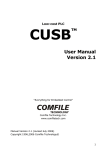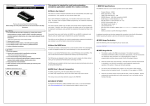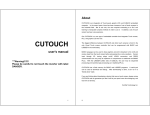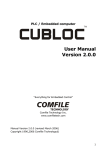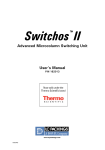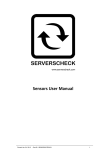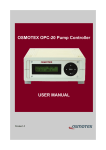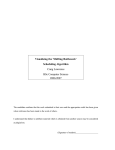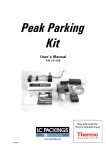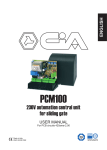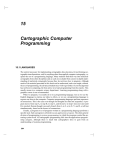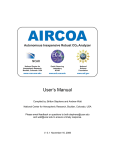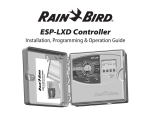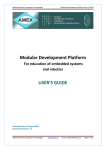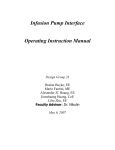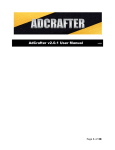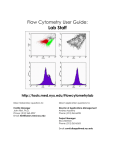Download Zack Smith
Transcript
Zack Smith 2/13/2008 BME 291 Week 3 Report Work Completed This week I focused mainly on programming the LCD remote control for the device. I set up the main menus and sub menus for the device controls that will be accessed by the user. I created a main menu with three submenus: Bladder Controls, Status Indication, and Device Settings. The submenus proved to be a little troublesome throughout the code writing process. I was able to create all of the submenus but was unable to get them all functioning correctly. When you touch certain buttons on the remote control the proper screens do not always pop up. So there is more work to be accomplished. I also was able to create a bargraph that functions properly and increases from zero to one hundred percent. The bargraph shades the proper amount and also displays the number percentage next to the graphical output. This graph will be tied to the resistance output of the stretch sensor and will increase accordingly and produce an accurate volume output. I also struggled with having the graph increase and produce a number output along with providing the user inputs to navigate to other portions of the device controls. This is another area for debugging. Figure 1 – CUTOUCH Artificial Sphincter I was in contact with Alan from AMS this week. He has agreed to provide us with an artificial sphincter and information to help us with our project. He informed us that we would need to sign a nondisclosure agreement stating that we not provide anyone with confidential material that AMS provides us in assistance with our project. Alan is sending a hard copy to Dr. Enderle to sign and then we will be able to begin exchanging information. Once we receive the sphincter we will be able to create a more accurate test setup and will also be able to start programming controls for the device. Figure 2 – AMS 800 Micropumps We also setup a simple design to test the micropumps. The micropumps are a simple dc motor that will pump water to the artificial sphincter that will control the contraction and relaxation of the device. We discovered that the pump was very sensitive to air in the system. The pump will not function at all when the smallest amounts of air are introduced to the flow of water. Fortunatly for our design the system will be closed and sealed and no air is necessary for the device function. So once the device is setup and functioning, air should not be an issue. We further discovered that by reversing the voltage to the motor does not change the direction of the flow of water. I had planned on being able to switch the voltage and create a two way pump so only one pump would be necessary for the design. Fortunately I did plan ahead and ordered two micropumps. Yamalia has contacted the company to see if there is a way to create a two way pump so only one is needed, but if we are unable to do this we will use a design that incorporates two pumps, which we have designed. Figure 3 – TCS MS100 Micropump Future Work This coming week I will continue to debug the program that I have written. If the debugging process goes quickly I would like to begin programming the wireless portion of the device. I will start simply by passing a simple signal from the remote to the other wireless transceiver and simply light an LCD or some other simple task. Once that has been completed I will begin to connect the LCD remote and the internal CUBLOC that Erica will be programming. Hours Worked This week I worked 15 hours. Most time was spent programming and continuing to go through the CUTOUCH User Manual. The programming for the LCD remote has actually gone faster than I originally anticipated, but I still have troubleshooting to continue.




